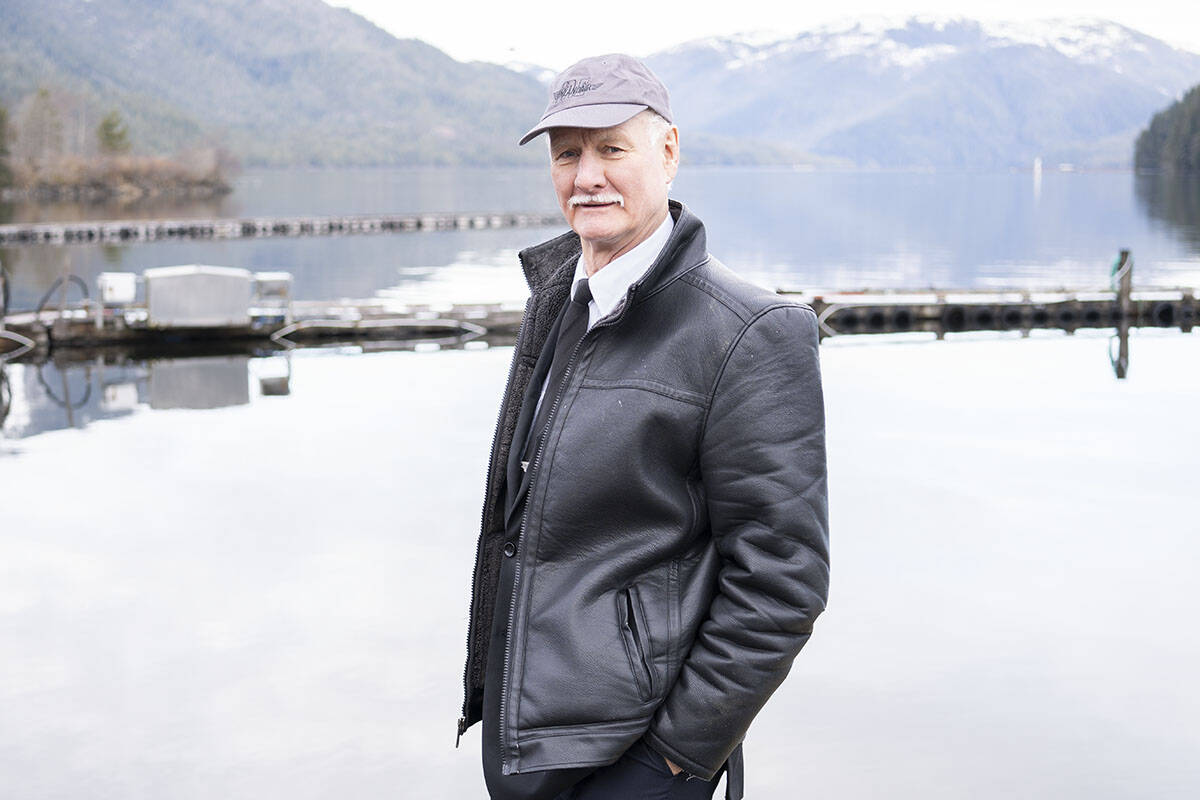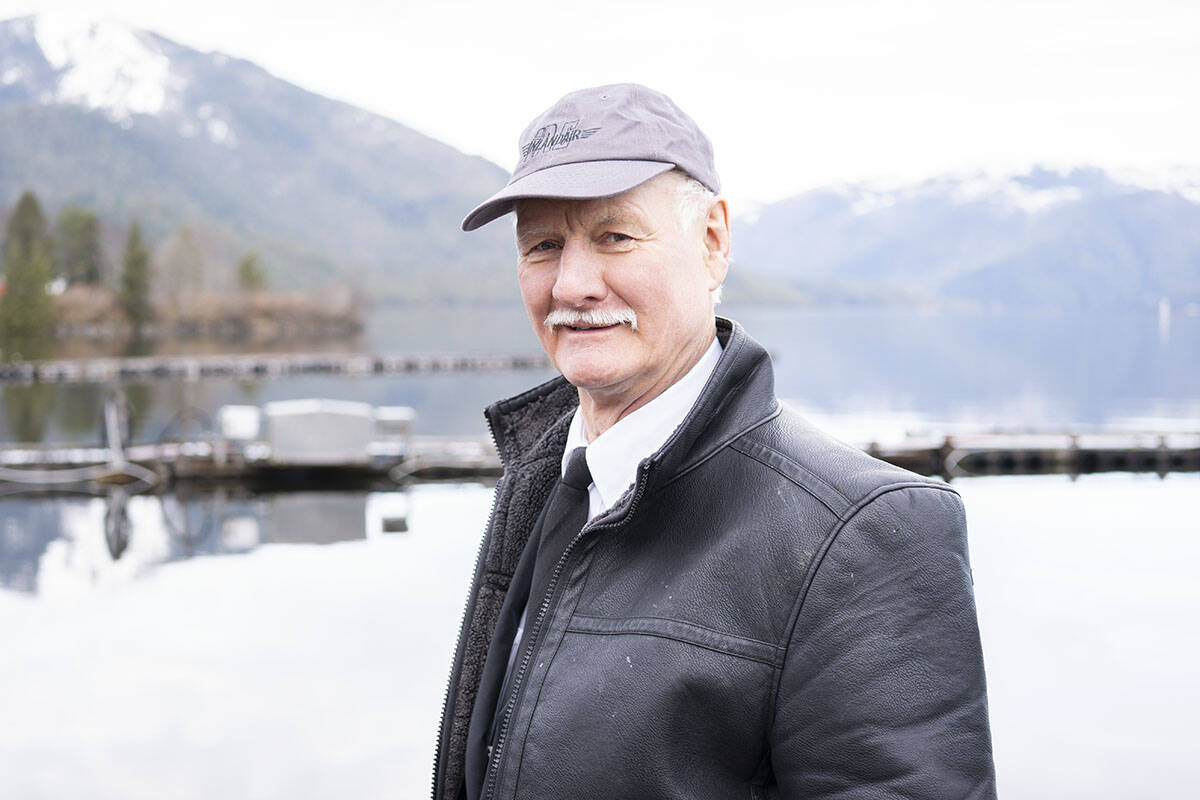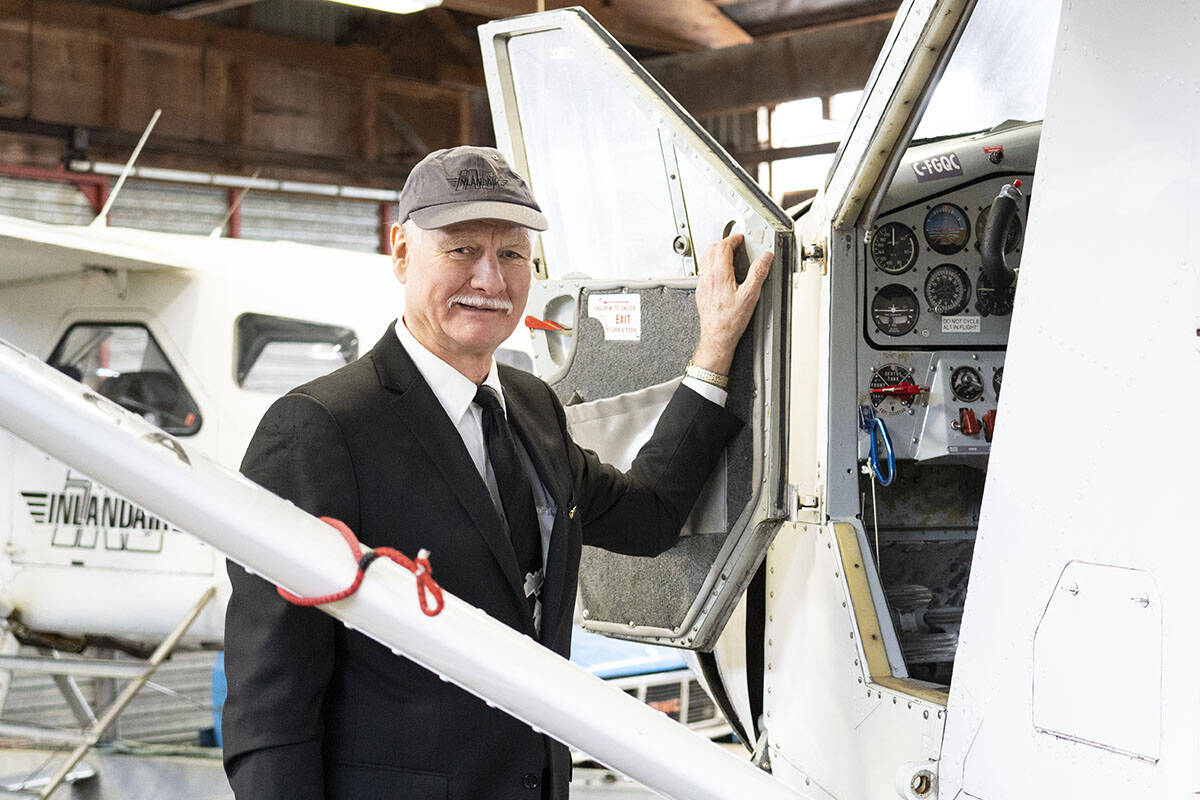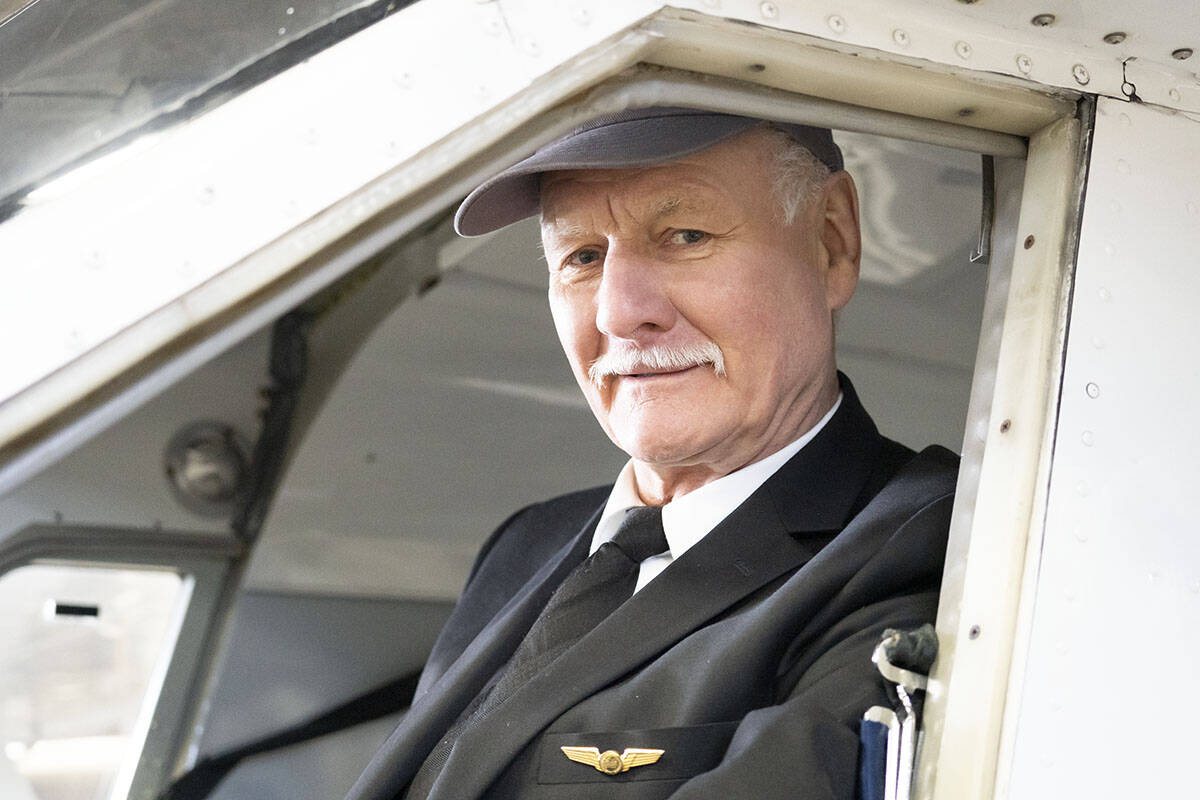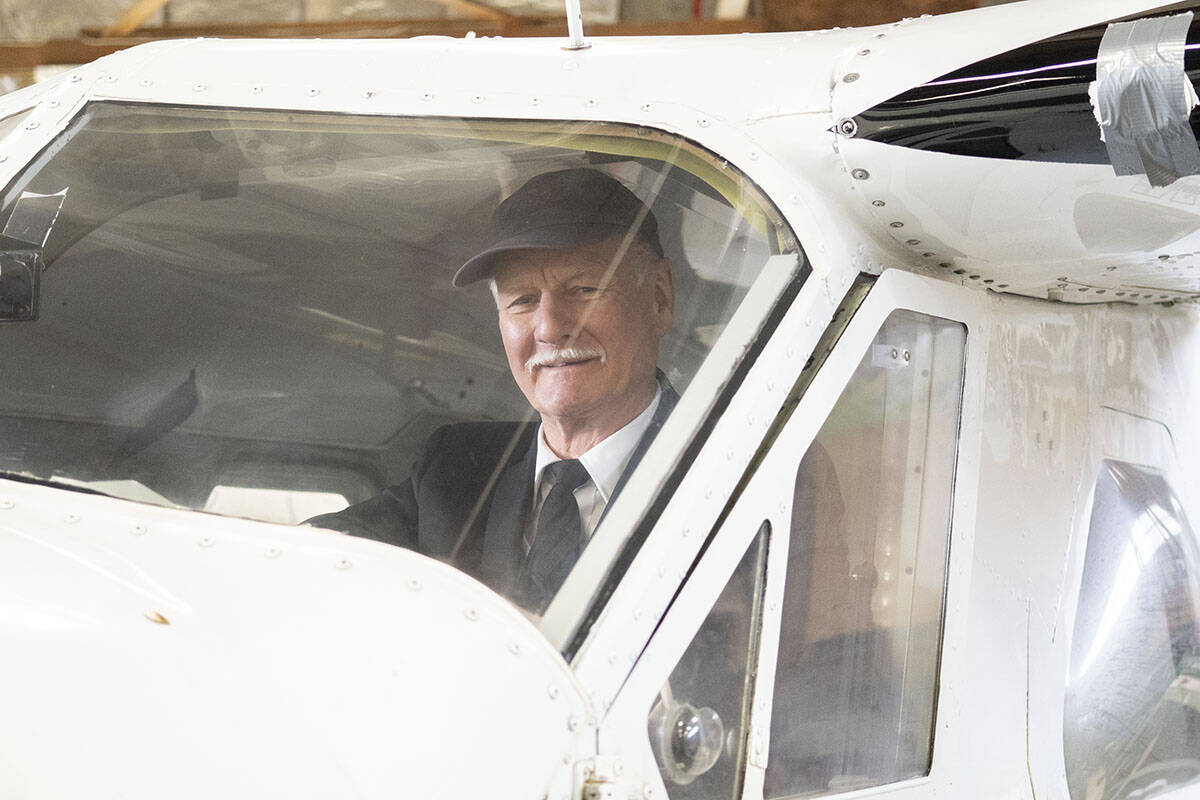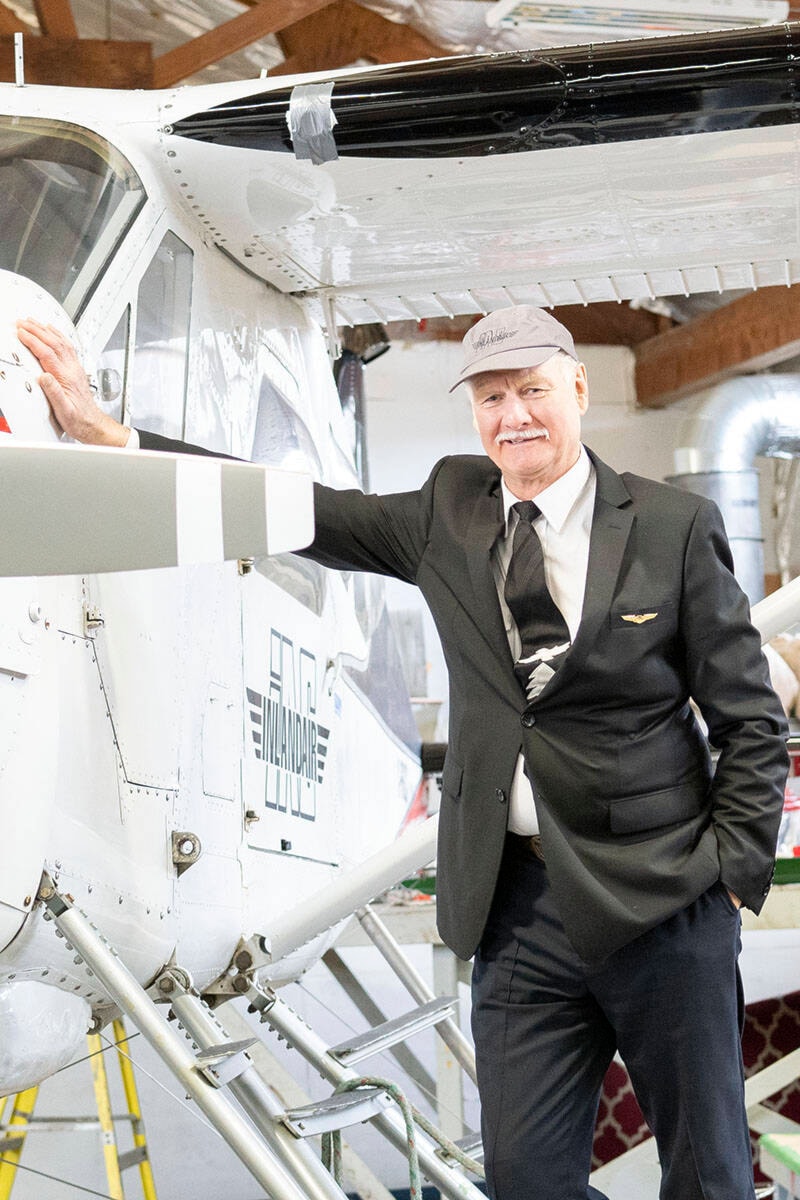Ralph Saunders has been safely navigating the skies for more than half a century — with 20 of those years based in Prince Rupert piloting floatplanes in the dicey North Coast airspace.
Originally from the small town of Trail, in southwest B.C., Saunders was first introduced to aviation at the age of six when his father bought him and his brother toy gliders. By the age of 10, he was building model airplanes.
These were not just toys planes though. Powered by rubber bands or even small gasoline engines, each replica was accurate to its full-scale counterpart and had to be built mechanically correct in order to function.
However, even with his new hobby and interest in aviation, Saunders didn’t have his eyes toward the skies, yet.
It was at 14 when Saunders first sat in the pilot’s seat of a small aircraft after his father bought him a 15-minute flight at the town’s flying club.
“Oh, I enjoyed that. [The pilot] allowed me to put my hands on the controls and put my feet on the rudder pedals — I felt I could fly the airplane with no trouble,” he said.
“Building the model airplanes, they were built just like a real airplane, and you learned all the names of all the parts … I knew how the controls worked [and] I knew basically everything about the structure of the aircraft.”
It was finally when he was 18, working a night shift at the town’s smelting plant, Saunders decided mid-shift to become a bush pilot.
“The next day, my dad and I went out to the airport to see what this entailed. We then went to the credit union [where] he co-signed a loan so I could have the money to get my licence,” he said. “Two days later, I went out and did my first flight.”
For a year, Saunders attended a flight school in Castlegar, 30 kilometres north of Trail, where he was trained to fly small engine aircraft, including float and ski planes.
“I felt like it was natural,” he said.
In fact, his last flight instructor, a former Royal Airforce Force pilot, said he had only taught about a dozen natural pilots, with Ralph being one of them.
Though natural for him, there was more to being a pilot than the aircraft.
“There’s a big learning curve when you start flying because it’s not just flying the airplane. It’s weather, it’s loading the aircraft and [more],” he said.
“In your training, you take the theory of weather. When you become a pilot, you experience the weather.”
A pilot learns his own capabilities and that of his aircraft only through experience, he said.
Shortly after finishing training, Ralph landed his first job flying at a regional airline before moving almost exclusively to manning floatplanes.
His niche skillset allowed Saunders to take advantage of jobs that would soar him to all kinds of far-off places in Canada.
His flight plans spanned the skies above the Arctic, transporting workers to remote locations for an array of resource companies or for the government. Most locations had no airstrip leaving the only mode of transportation as a floatplane.
For that type of work, pilots had to spend all summer stationed in the Arctic on a rotation of two to four weeks.
“I’ve liked living anyplace I am. You make the best of what you’ve got. In the Arctic you’ve got solitude, wilderness and the outdoors.”
Ralph navigated to Edmonton for three years where he battled fighting forest fires from the air with Boeing Stearman water bombers.
“It was really interesting, very enjoyable and it had its moments of excitement,” Saunders said.
The job required careful and precise teamwork, with another pilot communicating to him where and when to drop the load of water.
“You could feel the heat, but if you started feeling the heat you knew you were in the wrong place,” he said.
However, though enjoyable, the work also had long periods of being on standby, which could be overwhelmingly boring for Saunders.
It was after getting married and leaving fighting fires behind him that he decided to find a place to stick around for the long term. Ultimately, he secured a job in Prince Rupert at Inland Air, first as a temporary position and then full-time.
His two decades flying out of Prince Rupert and the surrounding region shaped him into the kind of pilot he is today.
“If you fly out of here, you become a North Coast pilot, because the North Coast is Unique. The whole of B.C. coast is unique in the plane experience,” he said.
Being a North Coast pilot is a badge of pride for Saunders.
“It’s one of the most challenging places to fly because of the weather and the wind. You’re continually making decisions about whether you can fly or should fly,” he said. “[If] you can fly in and out of Prince Rupert, you can probably get a job anyplace doing this kind of work.”
A bush pilot is different from commercial pilots, who fly upwards of 10,000 metres with fewer obstacles and have an array of technology to help operate the aircraft. Flying small engine aircraft is entirely at the control of the person in the cockpit.
How and if the aircraft can fly is weather-dependent. Pilots are limited to what they can see with their own two eyes. There are no special instruments other than a handheld GPS device. That is why flying through clouds is illegal.
“It becomes normal to fly at the lower limits of what’s legal to fly — because if you don’t fly in poor weather here, you just don’t fly … and what I can do is do it safety.”
Being able to fly in a challenging region and being able to do it safely are two different things. Throughout his whole career, Saunders has never crashed a plane.
He has always liked being in the front seat and plying his trade.
“Once you step into the cockpit, you’re the captain. It doesn’t matter how big or small the airplane is, you enjoy all the privileges and all the responsibilities of being the captain of an aircraft.”
Looking into the future, he is logging fewer flight hours. Instead, he sits in the co-pilot seat to train and shape the wings of next-generation pilots — something he never envisioned himself doing when he first took to the skies more than five decades ago.
“I’ve enjoyed that. Seeing them from knowing [almost] nothing to being able to say ‘okay, there’s the plane, there are the people, now go and do it.’”
He’s happy to be able to pass on the knowledge that one can only gain from experience.
“What I tell them is: if you do what I do, you might be flying when you’re 75 years old.”
Norman Galimski | Journalist
Send Norman
Like the The Northern View on Facebook
Follow us on Twitter
